Price Elasticity of Supply is defined as the responsiveness of quantity supplied when the price of the good changes. It is the ratio of the percentage change in quantity supplied to the percentage change in price.
The Price Elasticity of Supply is always positive because the Law of Supply says that quantity supplied increases with an increase in price. This means:
- If the supply is elastic, producers can increase output without a rise in cost or a time delay
- If the supply is inelastic, firms find it hard to change production in a given time period.
Price Elasticity of Supply Formula
To calculate the price elasticity of supply, use the following formula:
Price Elasticity of Supply (PES) = Percentage Change in Quantity Supply divided by the Percentage Change in Price

= ((New Quantity Supplied – Old Quantity Supplied)/(Old Quantity Supplied)) / ((New Price – Old Price)/(Old Price))
Price Elasticity of Supply Example Problem
Given the following data for the supply and demand of movie tickets, calculate the price elasticity of supply when the price changes from $9.00 to $10.00.

We know that the original price is $9 and the new price is $10, so we have Price (Old) =$9 and Price (New) = $10. From the chart, we see that the quantity supplied when the price is $9 is 75 and when the price is $10 is 105.
So we have:
Price (Old) = $9
Price (New) = $10
Quantity Supplied (Old) = 75
Quantity Supplied (New) = 105
To calculate the price elasticity of supply for movie tickets, we need to know what the percentage change in quantity supplied is and what the percentage change in price is.
Calculating the Price Elasticity of Supply
Calculating the Percentage Change in Quantity Supply
The formula used to calculate the percentage change in quantity supplied is:
[Quantity Supplied (New) –Quantity Supplied (Old)] /Quantity Supplied (Old))
[105 – 75] / 75 = (30/75) = 0.4
So we note that % Change in Quantity Supplied = 0.4
Now we need to calculate the percentage change in price.
Calculating the Percentage Change in Price
The formula used to calculate the percentage change in price is:
[Price (New) – Price (Old)] /Price (Old))
By filling in the values we wrote down, we get:
[10 – 9] / 9 = (1/9) = 0.1111
We have both the percentage change in quantity supplied and the percentage change in price so that we can calculate the price elasticity of supply.
The Final Step
PES = (% Change in Quantity Supplied)/(% Change in Price)
We now fill in the two percentages in this equation using the figures we calculated.
PEoD = (0.4)/(0.1111) = 3.6
We get the price elasticity of supply when the price increases from $9 to $10 is 3.6. So for movie tickets, the price is elastic and thus supply is very sensitive to price changes.
Five Determinants of Price Elasticity of Supply
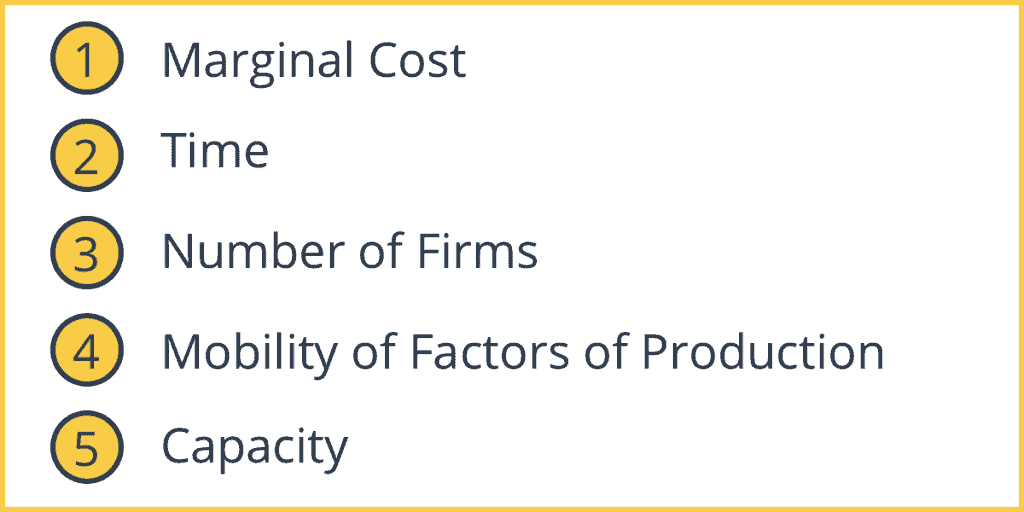
1. Marginal Cost
If the cost of producing one more unit keeps rising as output rises or Marginal Costs (which is the increase in cost by producing just one more unit) rises rapidly with an increase in output, then the rate of output production will be limited, i.e., Price Elasticity of Supply will be inelastic, which basically means that the percentage of quantity supplied changes less than the change in price. If Marginal Cost rises slowly, then supply will be elastic.
2. Time
Over time price elasticity of supply tends to become more elastic, which means that producers would increase the quantity supplied by a larger percentage than an increase in price.
3. Number of Firms
The larger the number of firms, the more likely the supply is elastic. This is because other firms can jump in to fill in the void in supply.
4. The Mobility of Factors of Production
If factors of production are mobile, then the price elasticity of supply tends to be more elastic. This means labor and other manufacturing inputs can be brought in from other location to increase capacity quickly.
5. Capacity
If firms have spare capacity, the price elasticity of supply is elastic. The firm can increase output without experiencing an increase in costs, and quickly with a change in price.
Five Types of Price Elasticity of Supply
These are the five ranges of Price Elasticity of Supply.
Perfectly Inelastic Supply
(PES = 0), The Quantity Supplied doesn’t change as the price changes.
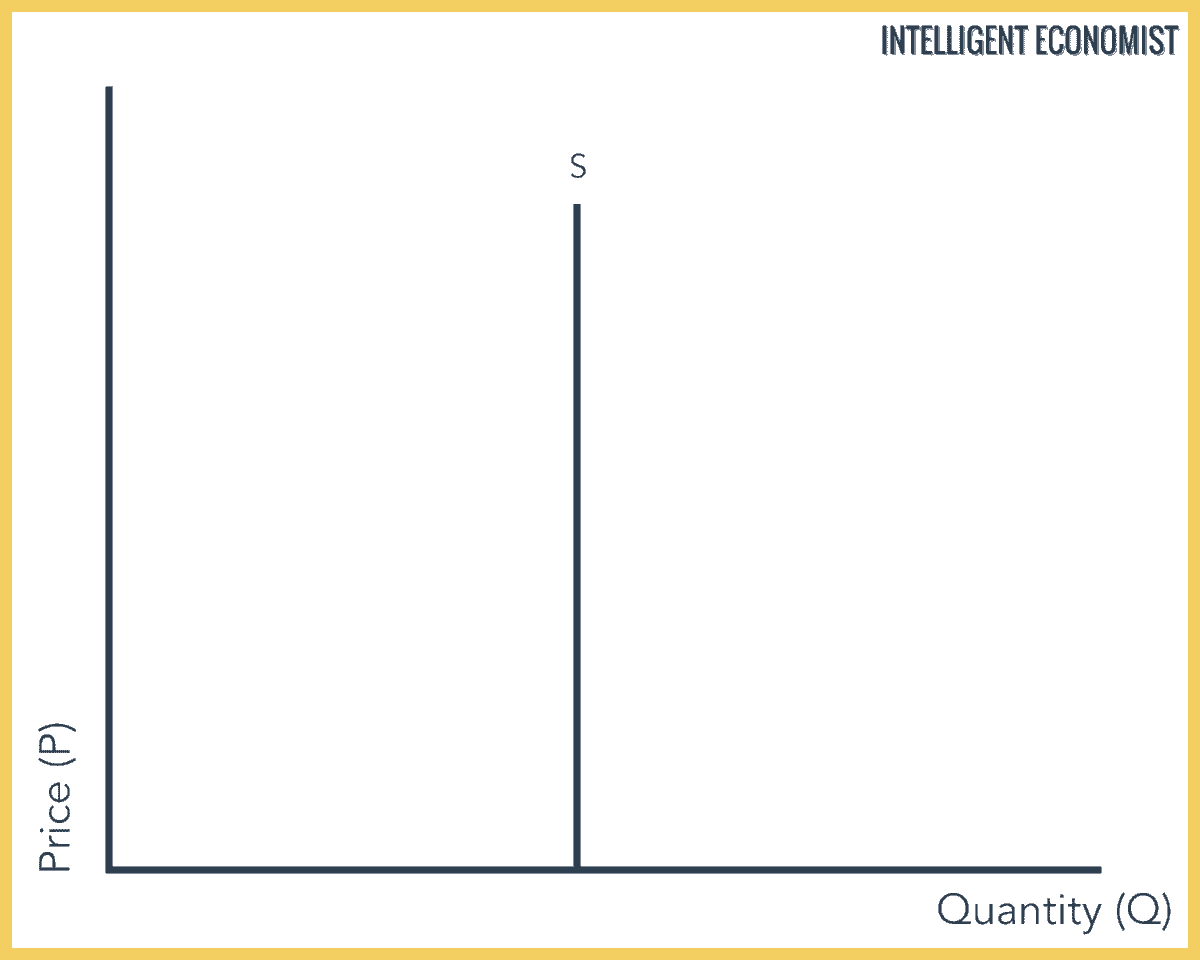
Relatively Inelastic Supply
(0 < PES < 1), Quantity Supplied changes by a lower percentage than a percentage change in price.
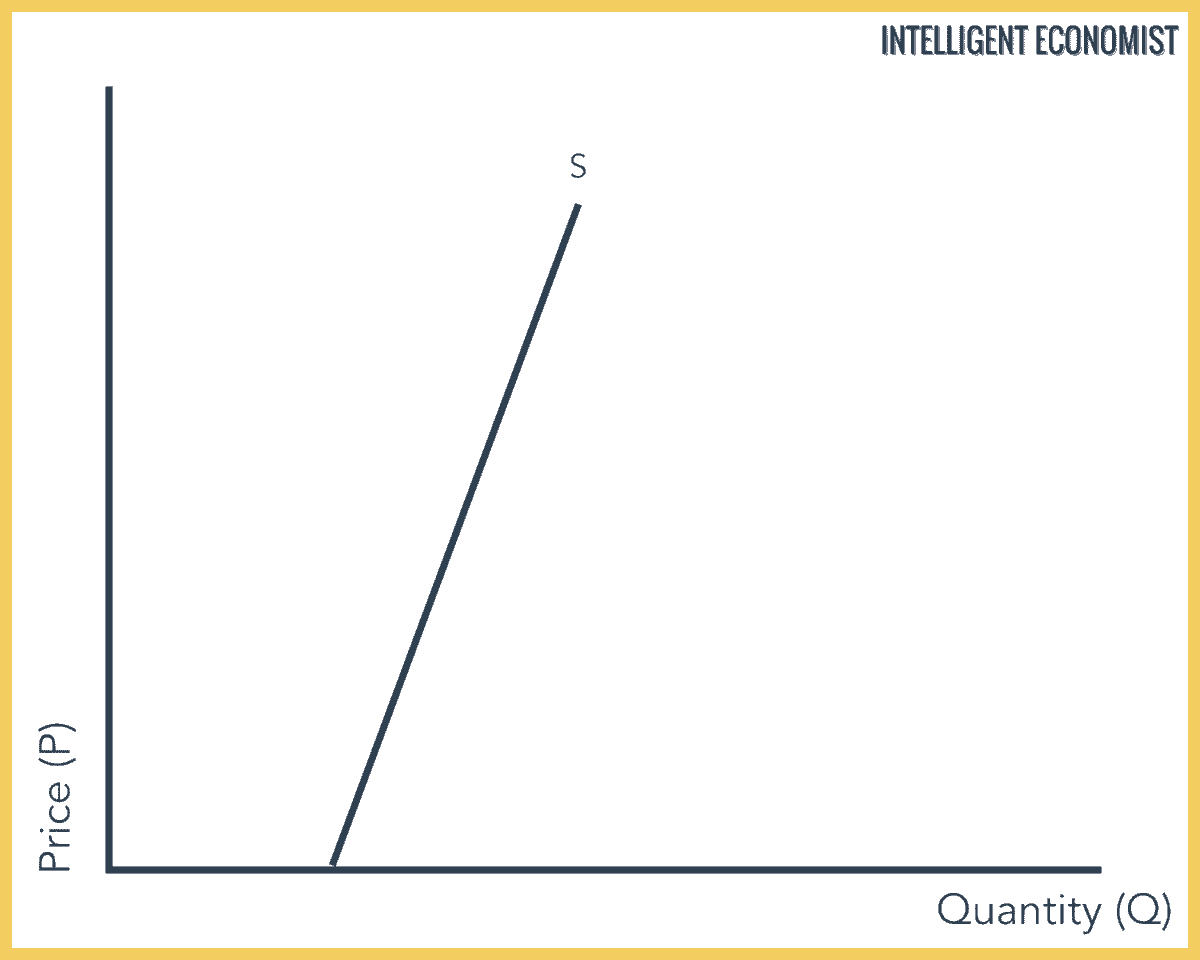
Unit Elastic Supply
(PES = 1), Quantity Supplied changes by the same percentage as the change in price.
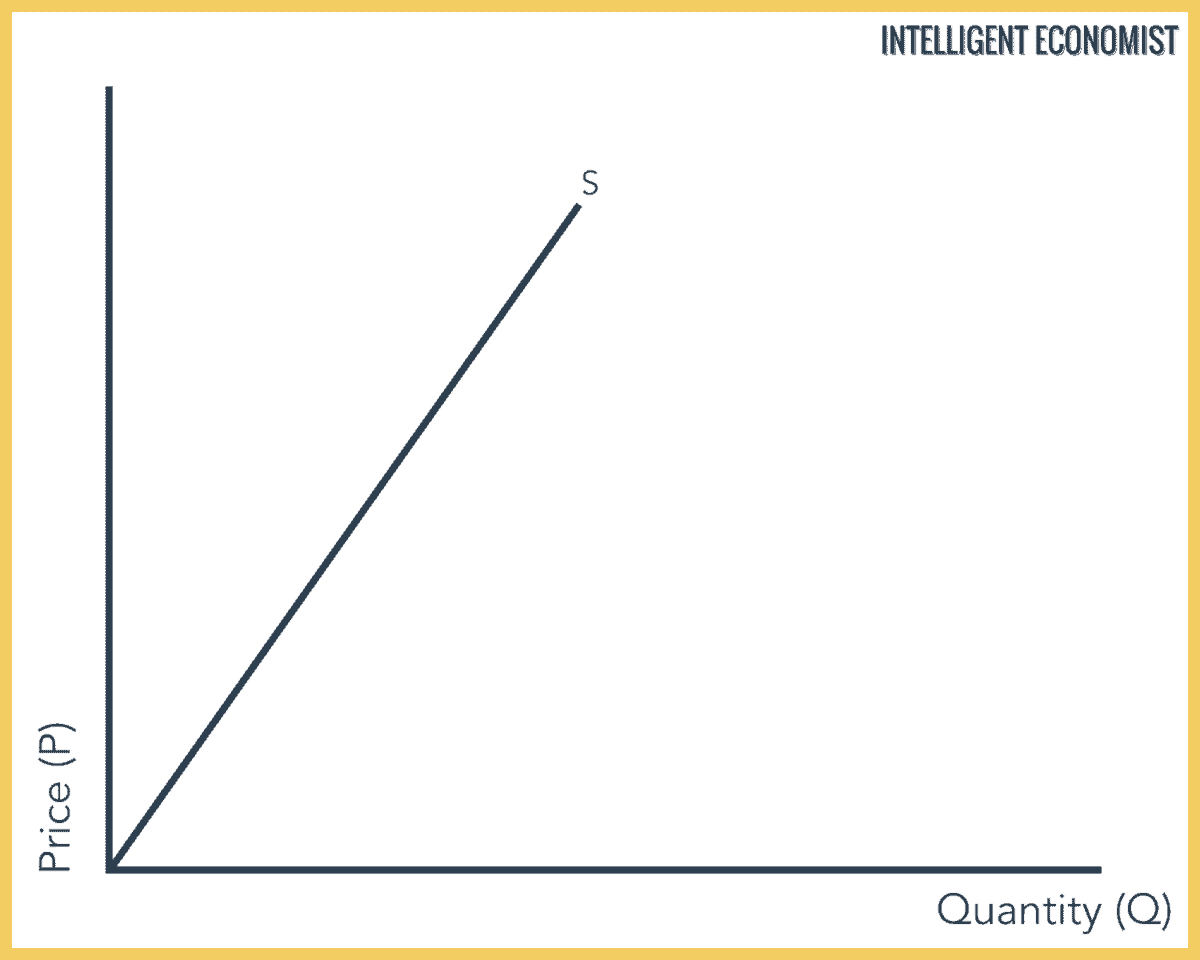
Relatively Elastic Supply
(1 < PES < ∞), The Quantity Supplied changes by a larger percentage than the percentage change in price.
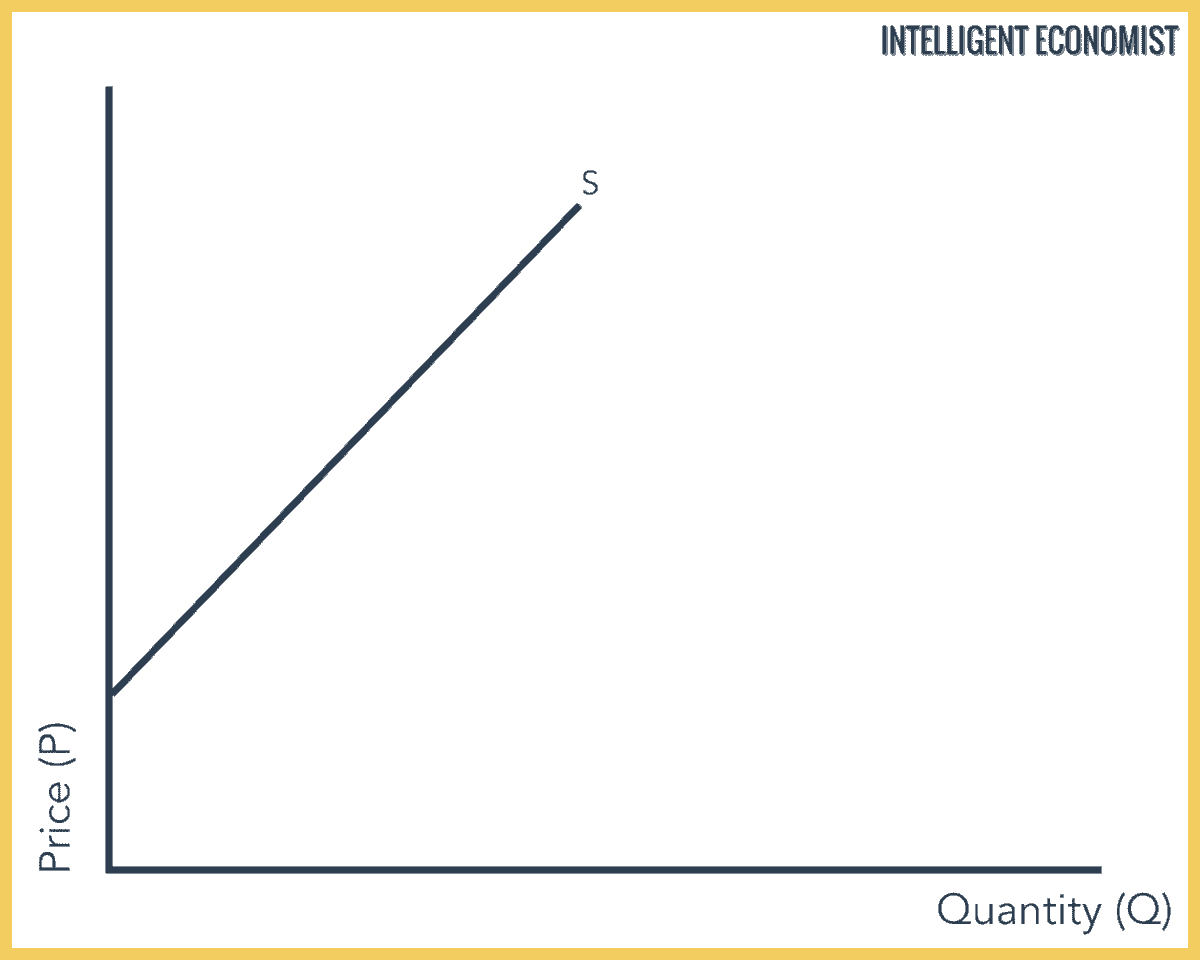
Perfectly Elastic Supply
At Perfectly Elastic Supply (PES = ∞), suppliers will be willing and able to supply any amount at a given price but none at a different price. In the case of perfectly elastic supply, if the price of the good or service were to decrease at all, the supply would decrease to zero right away. There is, in other words, an extreme change in demand when prices change even a small amount.
In algebraic terms, the elasticity of the product (which is the percent change of price or the percent change of quantity) is infinite—literally, it is equal to infinity. As visible in the graphic below, a perfectly elastic supply curve is represented by a simple horizontal line. The perfectly elastic supply curve is horizontal precisely because the elasticity equals infinity.
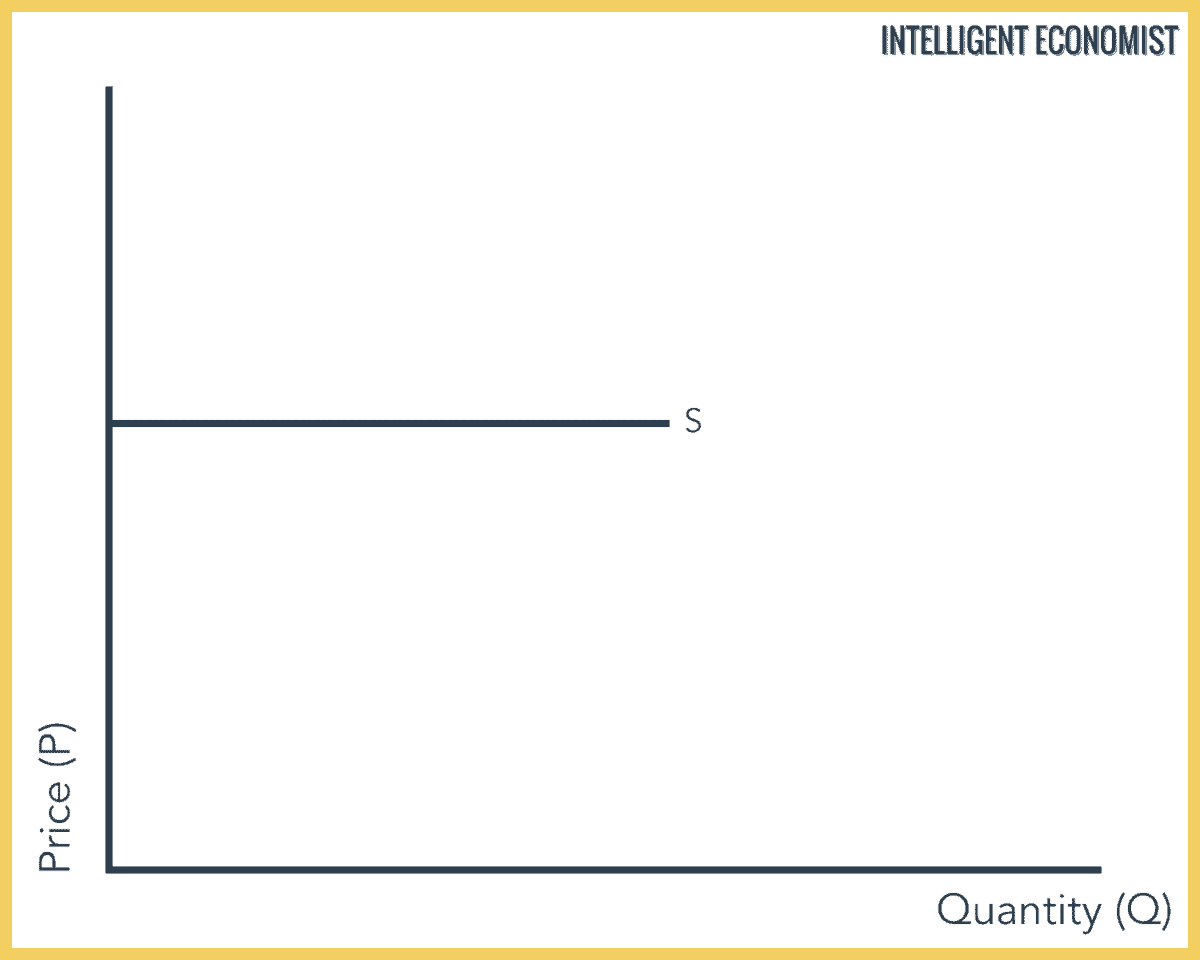
Example of perfectly elastic supply
Although it is quite challenging to locate real-world examples of perfectly elastic supply, there are a few possible examples. For instance, a perfect competition labor market with many firms hiring new workers has wages determined by the industry as a whole rather than by any one company. The market sets the wage rate, and individual firms are wage takers. The labor supply, then, has a perfectly elastic curve because if a particular firm changes its wage, the supply will change infinitely.
In the real world, this might mean something like an industry where everyone is typically paid the minimum wage. If a company in that industry then offered less than minimum wage, there would be no one interested in applying for their jobs. Conversely, if a firm offered anything more than minimum wage, lots of people would likely want to apply to work there, rather than at firms that pay only the minimum wage and no more.

